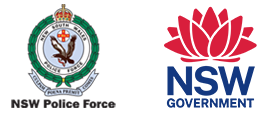FRAUD - WHAT IS IT?
Fraud is defined as encompassing a wide variety of corrupt, deceptive, dishonest or unethical behaviour. It is described as using false representation to obtain unjust advantages. The main types of fraud that retail and restaurant businesses are most likely to come in contact with include credit card fraud and counterfeit notes.
CREDIT CARD FRAUD.
- Be alert for customers who act suspiciously, particularly if they:
- Try to rush through a sale
- Look nervous or agitated
- Make purchases without regard to size, quality or price
- Arrive at closing time
- Have no identification
- Request transactions to be manually entered
- Sign their name slowly or unnaturally
Always inspect the card front and back:
- Check if the card is damaged
- Check the expiry date
- Check the printing and embossing - does it appear to be altered?
- Check the hologram is 3D and changes colour when tilted
- Check to see if the card is listed in the Warning Bulletin
- Check to see that the card has been signed
- Check the signature panel – has it been altered?
- Does the customer’s signature match the card signature?
If you are suspicious of the card:
- Ask for photo identification, such as a drivers licence or passport
- Hold the card while completing the transaction
- Call for authorisation and ask for “Extension 500”
Never let anyone service or remove your EFTPOS terminal without first sighting appropriate photo identification and change the terminal password or PIN regularly.
COUNTERFEIT NOTES - WHAT TO LOOK FOR!.
- Feel the note – a genuine note is printed on special plastic polymer and is difficult to tear
- Hold the note to the light and look for the Australian Coat of Arms. This is generally located to the left of the clear window, or denomination numeral when looking at the front of the note. For the $5 note, check to the left of the word ‘Australia’
- Look for micro printing. This is generally located near the portraits. Using a magnifying glass, micro-printed words should be clearly visible
- Feel for slightly raised printing on the main design of the note
- Look for the seven pointed star inside a circle
- Compare the background printing - look for any distortions or less clearly defined patterns.
- Check that the note has a clear window and that it has a clear printed image: $5 note has a gumflower; $10 has a windmill; $20 has a compass; $50 has the Southern Cross and the $100 has the lyrebird. Also, if the note is titled the embossing of a wave pattern is located in this window on the $10 and the numbers 20, 50 and 100 appear in the window of the respective notes
- If possible, Look under a UV light to locate the serial numbers
WHAT TO DO IF YOU SUSPECT THAT YOU HAVE RECEIVED A COUNTERFEIT NOTE!.
- Advise the person that you think that the note is counterfeit and that you are going to call the Police
- Handle the note as little as possible and place it in an envelope or other protective covering
- Record the person’s description and vehicle registration numbers (if sighted)
- Notify the Police straight away
BUSINESS SCAMS.
- DO business with companies you know and trust
- DON’T be rushed or pressured into making a decision or fall for high pressured sales tactics
- ALWAYS ask for the name, identification, ABN and contact number of the person you are speaking to and who they represent
- INSIST on written information and quotes for work
- FIND out whom you are dealing with. Contacting the Australian Securities and Investments Commission (1300 300 630 or 9911 2000) is a good place to start
- READ letters and contracts carefully and seek professional advice from an accountant or solicitor if unsure or significant amounts of time or money are involved
- DO NOT give out personal information over the telephone, such as credit card details or the names of employees, until you have checked out the company and know they are legitimate
- KEEP proper records. Poorly organised businesses are the main targets for scammers
- KEEP the number of people authorised to pay cheques to a minimum.

